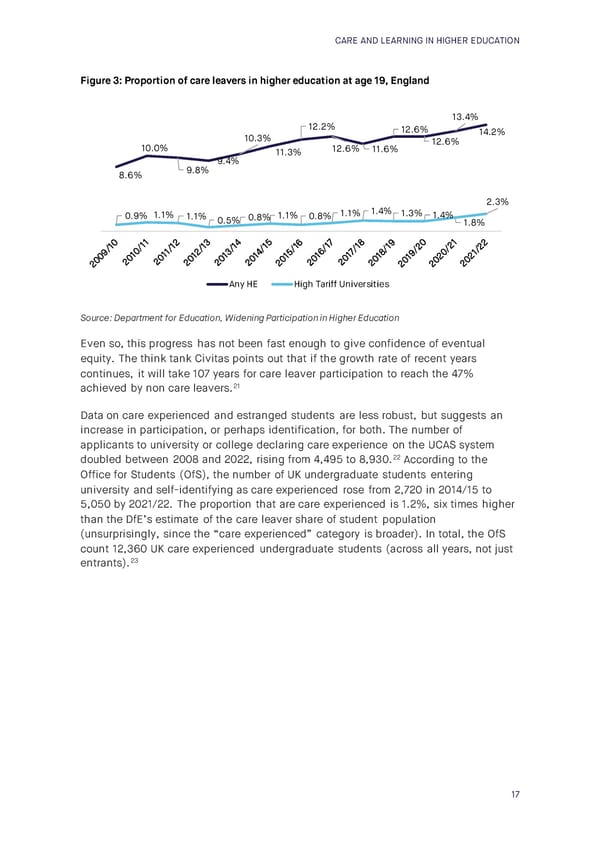CARE AND LEARNING IN HIGHER EDUCATION Figure 3: Proportion of care leavers in higher education at age 19, England 13.4% 12.2% 12.6% 14.2% 10.3% 12.6% 10.0% 11.3% 12.6% 11.6% 9.4% 8.6% 9.8% 2.3% 0.9% 1.1% 1.1% 0.8% 1.1% 0.8% 1.1% 1.4% 1.3% 1.4% 0.5% 1.8% Any HE High Tariff Universities Source: Department for Education, Widening Participation in Higher Education Even so, this progress has not been fast enough to give confidence of eventual equity. The think tank Civitas points out that if the growth rate of recent years continues, it will take 107 years for care leaver participation to reach the 47% achieved by non care leavers.21 Data on care experienced and estranged students are less robust, but suggests an increase in participation, or perhaps identification, for both. The number of applicants to university or college declaring care experience on the UCAS system doubled between 2008 and 2022, rising from 4,495 to 8,930.22 According to the Office for Students (OfS), the number of UK undergraduate students entering university and self-identifying as care experienced rose from 2,720 in 2014/15 to 5,050 by 2021/22. The proportion that are care experienced is 1.2%, six times higher than the DfE’s estimate of the care leaver share of student population (unsurprisingly, since the “care experienced” category is broader). In total, the OfS count 12,360 UK care experienced undergraduate students (across all years, not just 23 entrants). 17
 Care and Learning in Higher Education Page 17 Page 19
Care and Learning in Higher Education Page 17 Page 19